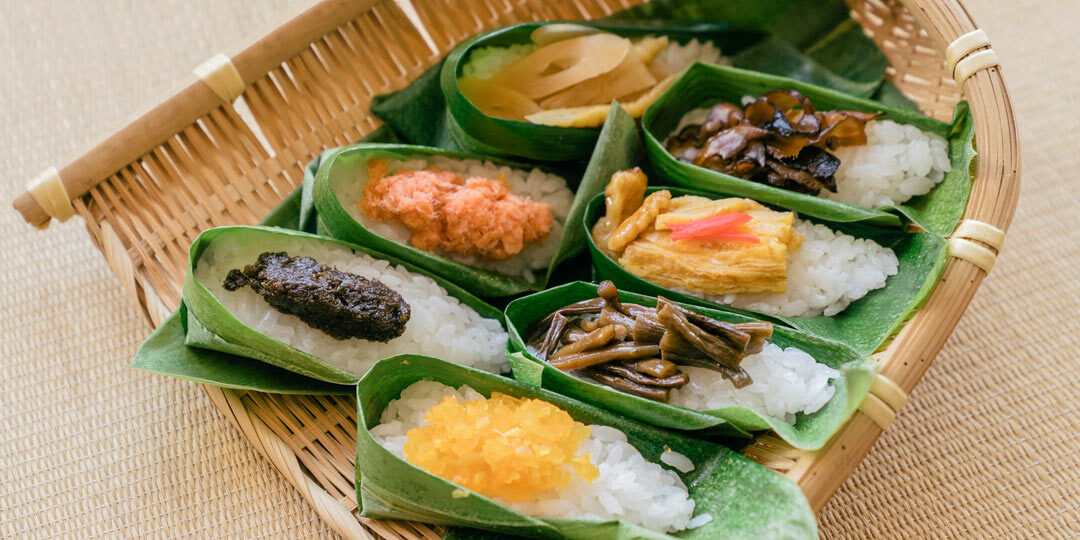Best Japanese Desserts You Need to Try – Desserts in Japan are as varied as the four seasons.
In the ancient capital of Kyoto, Wagashi, or traditional confectionery, are exquisite creations of beauty. Often so elegant, you will find yourself reluctant to actually eat them.
Throughout cities large and small, local interpretations of classic Western desserts are also widely available. Some are even considered must-try at the spots most famous for them. For example, the crepes of Harajuku.
Whichever you choose to enjoy, Japanese desserts will always be a slice of sweet heaven at your fingertips. Or should I say, right before your lips?
Table of Contents
Matcha Desserts
Matcha, of course, referred to finely grounded green tea leaves whisked into a thick, vegetal-tasting brew. If you can’t get enough of this classic drink or prefer to enjoy it with more sweetness, rejoice, you’d be astounded by the variety of matcha-based desserts in Japan.
Positively astounded and spoilt for choice.

The number of types of matcha desserts in Japan can fill a book.
From cakes to Swiss rolls to puddings, to soft-serves and cookies and even Kit Kats, the list just goes on and on.
You could furthermore enjoy matcha chilled and served with ice cream, or brewed latte-style, or as a milkshake. Whichever your choice, know that it will always be a signature taste of Japan. Always the perfect end to any Japanese meal too.
Wagashi

The elegance and beauty of wagashi are a joy to behold.
Like matcha desserts, an entire book could be devoted to introducing the history or types of Wagashi, and desserts aside, you must at least try some when in Japan. In summary, though, these gorgeous delights are traditional sweets/cakes conceptualized to reflect the seasons or scenic beauty. If not, they represent the heritage of their origin cities.
Typically made from mochi and filled with red bean paste (anko) or fruit, many are also best enjoyed together with bitter matcha tea; the bitterness of the beverage balances the sweetness. Absolutely exquisite to behold, their aesthetic elegance naturally makes them perfect as travel gifts too. Just remember to pay attention to expiry dates when buying any.
Mochi
Mochi refers to Japanese rice cakes made from sticky japonica glutinous rice. In the world of travel, though, the name is synonymous with classic Japanese sweets/confectionery. As mentioned above, mochi is the most common ingredient for wagashi.
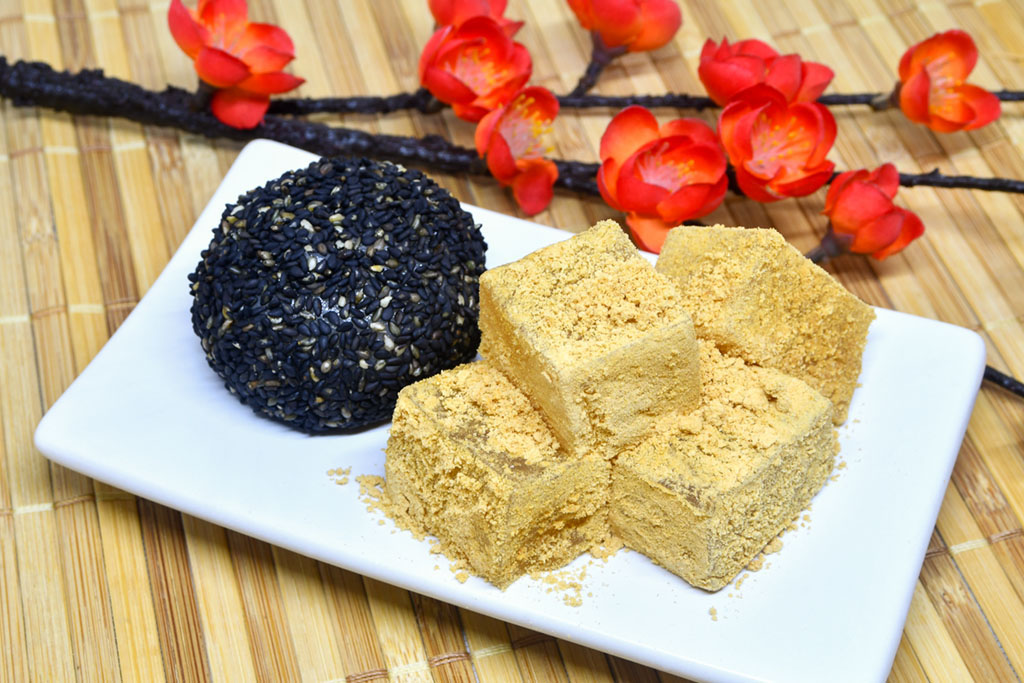
A black sesame daifuku with warabi mochi. Both are classic mochi snacks.
Outside of glutinous rice, mochi can also be made using other ingredients. For example, warabi mochi is made from bracken starch (warabiko) and is eaten after being coated with sweet soybean flour (kinako). Kuzumochi is made from wheat starch and eaten chilled with a dash of black honey (anmitsu) and kinako.
The short of it, there are tens of types of mochi to try, with all perfect as snacks or desserts. One could perhaps even say the soft, chewy bite of any is the quintessential taste of classic Japanese desserts.
Crepes
Positively a culinary institution in itself, the rolled-up crepes of Harajuku is a yummy attraction not to be missed when you’re in the trendy district. Let’s just say that with tens of types sold at each stall, you are bound to find one that suits your taste. If not several.
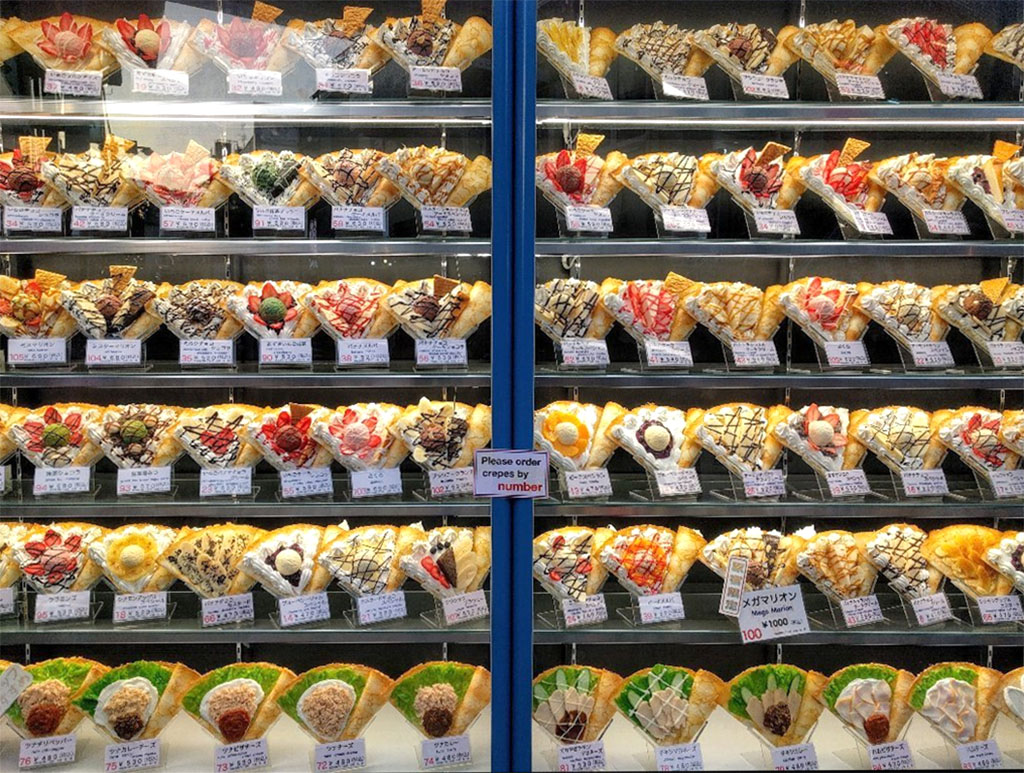
Look at the number of types of crepes available at this Harajuku outlet! (Source: Tripadvisor)
And if you’re skipping Harajuku, despair not, the same delight is widely sold throughout Japan, albeit with lesser varieties. For example, Anime pop-up cafes will usually have one or two unique creations.
Likewise, family restaurants and cafes will have a small selection too. In summary, this is one yummy, modern feast you can enjoy anywhere.
Japanese Parfaits
Like in America, Japanese parfaits are chilled desserts served in a tall glass. Layered with ice cream, nuts, cereal, and even fruits, they count among the most popular and varied desserts in Japan. At some eateries, it could be mesmerizing examining the plastic displays beside entrances.
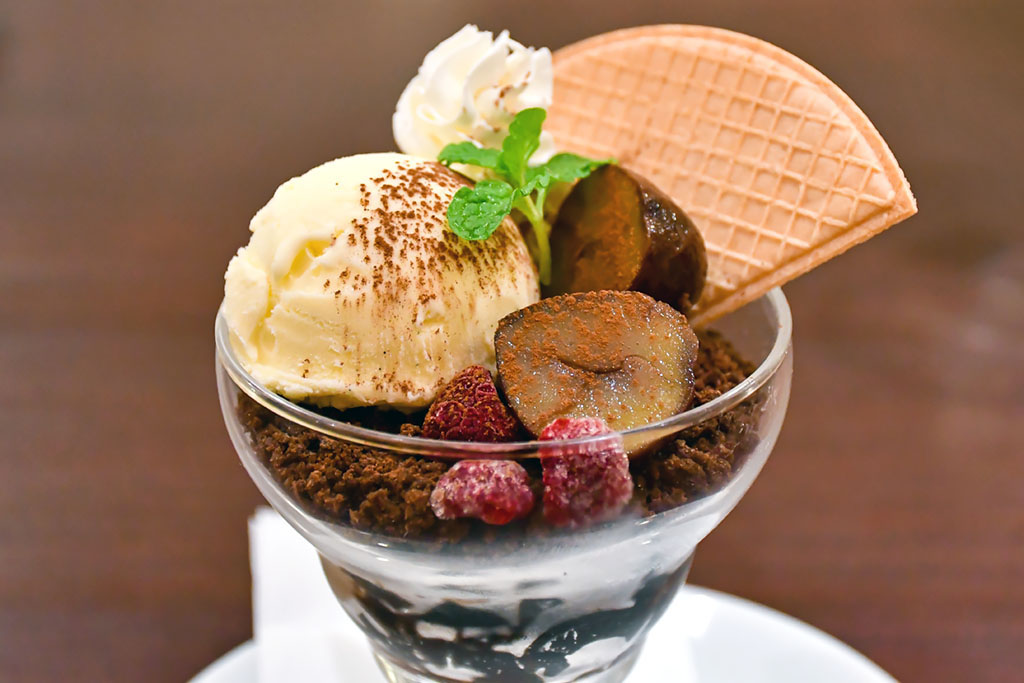
A Nagoya “autumn” parfait with vanilla ice cream and chestnuts.
Throughout the country, parfaits frequently include traditional ingredients like anko, anmitsu, or mochi too. They could even showcase exotic regional fruits.
In other words, these colorful Japanese desserts are convenient all-in-ones for you to sample different tastes. Needless to say, all provide great selfie opportunities too.
Zenzai
“Red bean soup” might not sound appealing in writing, but believe me when I say this simple yet elegant dessert is one of the most oriental finishes to any Japanese meal.

Enjoying a warm bowl of zenzai in winter is absolutely heavenly. (Source: Facebook)
Usually served warm and with mochi or shiratama (white glutinous rice dumplings), the color contrast of the ingredients makes them splendid for pictures, on top of being wonderful during cold weather. Of note, zenzai is actually a type of shiruko, or red bean dessert, and in Shimane Prefecture, it is even eaten to celebrate the New Year.
The thickness of the main paste could also vary. Some are porridge-like in texture while others are watery. Chestnuts are sometimes used in replacement of mochi or shiratama too.
Castella
Walk into any Nagasaki souvenir shop and you’d find it hard not to see castella cakes prominently on sale. Introduced into Japan by Portuguese merchants during the 16th century, the name comes from the Portuguese term Pão de Castela, which means “bread from Castile.” Today, Japanese castella is typically sold in rectangular blocks.
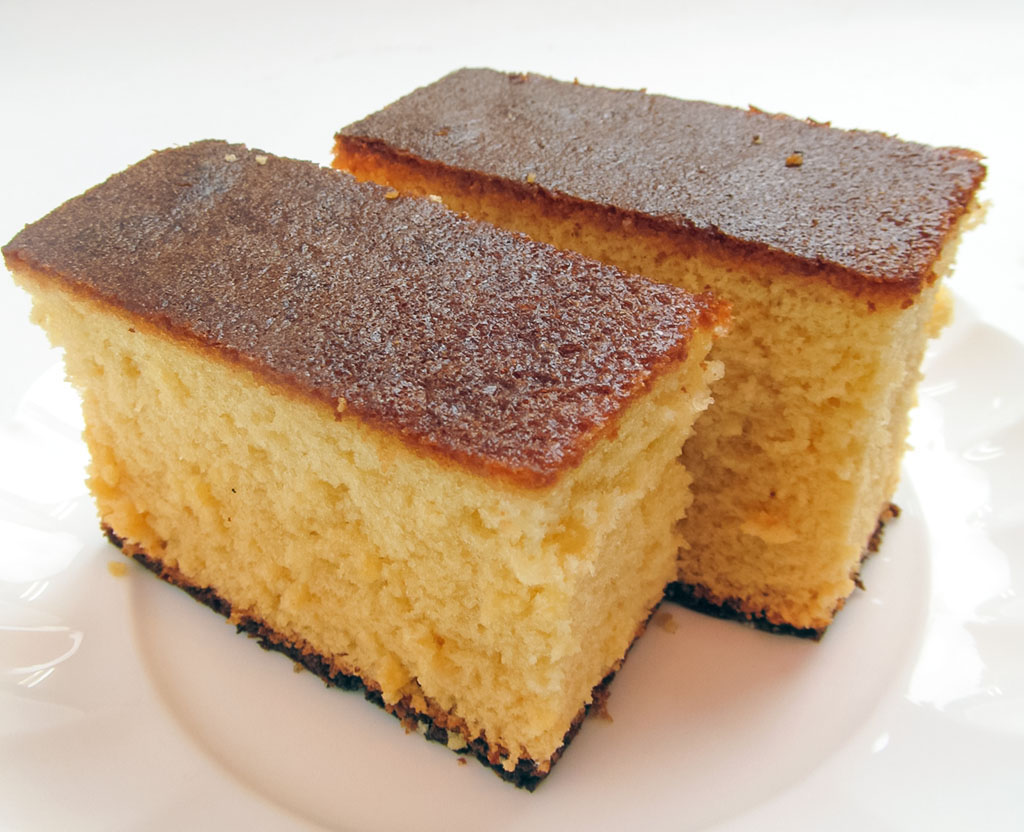
Castella cake is a snack and Japanese dessert that you must try especially when in Nagasaki.
Deliciously light with a mild sweetness, castella is perfect on its own or enjoyed with coffee and tea. Some eateries might even serve them with ice cream. Lastly, there are expectedly different varieties; from original to matcha-flavored, to brown sugar (kuromitsu) flavored. Any slice will always be the perfect finish to any meal in Nagasaki, or elsewhere in Kyushu.
Coffee Jelly
The thought of enjoying coffee as a jelly pudding will make coffee connoisseurs balk, but hold your horses, one try and you just might fall in love with this unique dessert.
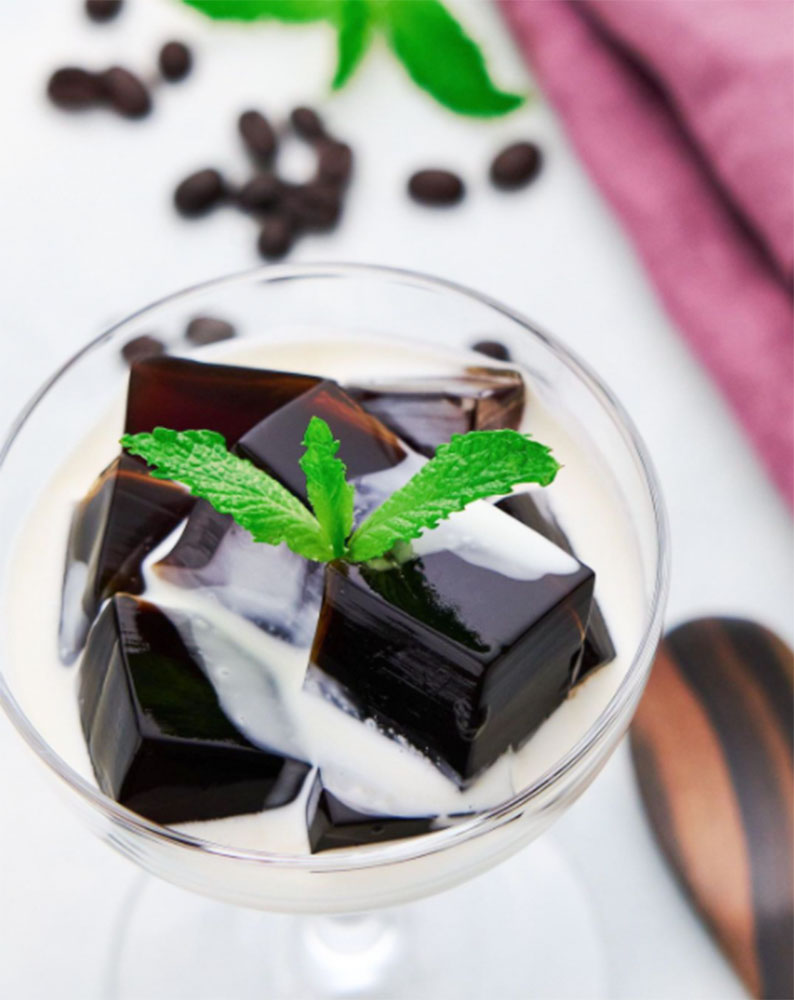
Instead of a cuppa to round off your meal, have some coffee jelly! (Source: Instagram)
Most often served with ice cream or drizzled with condensed milk, the bouncy, mildly bitter taste is a perfect compliment for the sweetness accompanying it. Beyond a point, you might even love it so much you’d forgo all condiments and just have it “black.”
Trivia: In Anime, coffee jelly is also famous as the weakness of the super psychic, Saiki Kusuo. One look at his dreamy face when enjoying one, and I’m sure you’d want to have a spoonful yourself.
Kakigori
Japanese summers can be vibrant but oppressively hot. When the heat gets to you, it’s time for a picture-perfect kakigori!
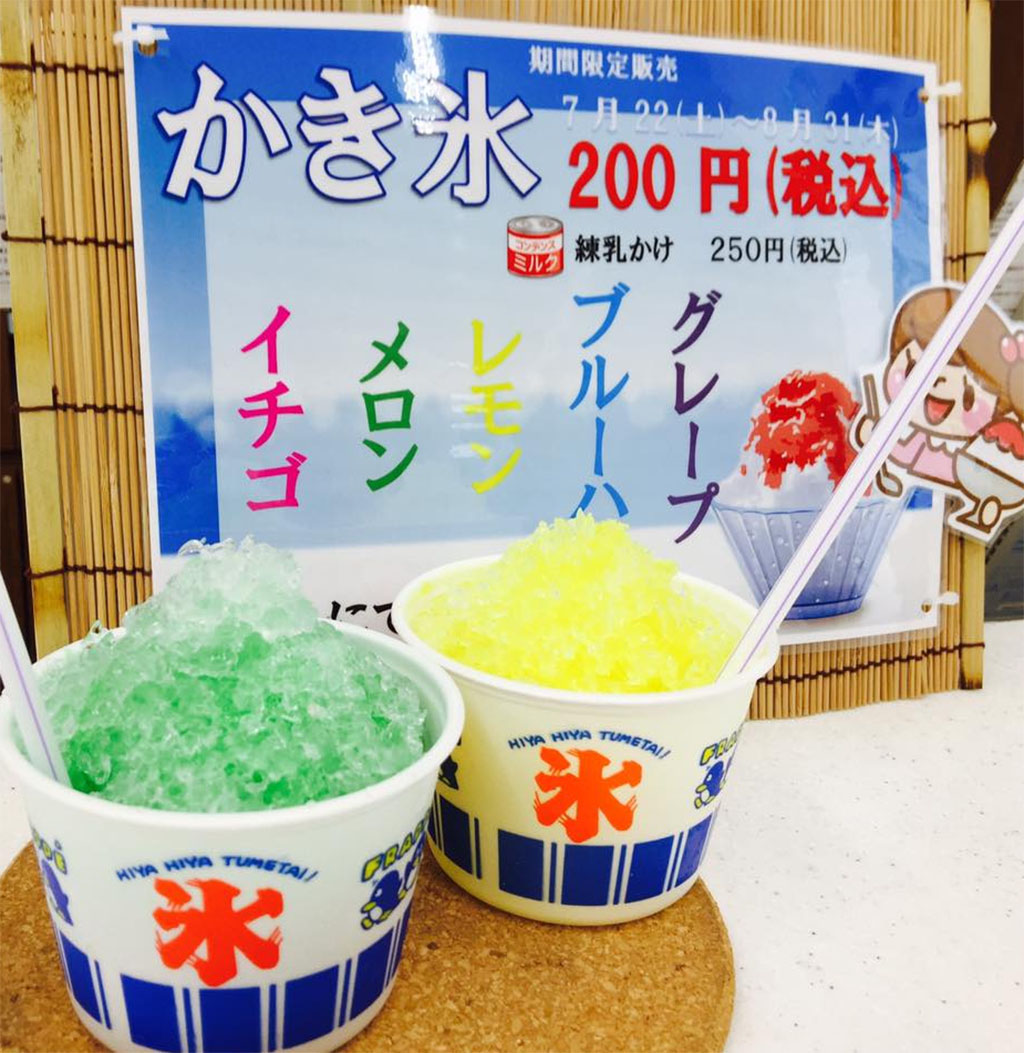
“Traditional” kakigori sold at summer street fairs. Those served at cafes, on the other hand, resemble parfaits. (Source: Facebook)
An icon of summer matsuri, these colorful shaved ice desserts will immediately cool you down. Like parfaits, they also come with a wide variety of sauces and toppings. Those served at cafes might even include cream, slices of fruits, and mochi.
And if you prefer your summer desserts to be smoother, go for a kuzukiri instead! Made from kudzu powder and served with black honey, with other toppings, these sweet finishes are equally as effective at putting the summer heat behind you.
Purin
“Purin” is the Japanese name for custard puddings. Widely sold and often served as desserts in set meals, they are similar in taste to western versions and typically served with caramel syrup. In some cases, the syrup used could also be kuromitsu or fruit sauces.

Minature custard “purin” in glass jars.
Beloved from Kyushu to Hokkaido, the ones in supermarkets and convenience stores are often sold in a miniature glass container as well, making them easy to bring to a picnic. To highlight, purin are so popular, some travel publications even consider them Japan’s national dessert.
That is a matter of debate, but what’s true is that every major Japanese confectioner has at least one signature purin on sale. You could have a full foodie adventure, just sampling all the exotic types on sale.
Japanese Popsicles and Other Icy Desserts
Last but not least, ice popsicles! While these are not uniquely Japanese, they occupy a special place in pop culture.
Very simply, the Gari Gari-kun brand of popsicles don’t just come with unusual flavors, their wooden sticks sometimes have the characters 一本当たり. If you’re lucky enough to get one, you can exchange the stick for another popsicle.
Within Japanese pop culture, giving away a winning stick could be interpreted as a love declaration too. One example being in the popular sports Anime, Kuroko’s Basketball.
Outside of the thrill, and humor, these popsicles are cheap and utterly refreshing. Especially wonderfully after a hot summer’s day.

Gari Gari-kun popsicles. Fun, yummy, and refreshing! (Source: Facebook)
Of course, any convenience store will also sell a variety of other icy desserts, from popsicles shaped like fruits to milk bars, to frozen Taiyaki, to even frozen fruit cubes. No time for dessert after a sit-down meal? No problem! For a thousand yen, you can buy a bagful to enjoy in your hotel.
Be sure to follow us on Facebook, Instagram, Twitter, and Pinterest for more fun stuff!

Ced Yong
A devoted solo traveler from Singapore who has loved Japan since young. His first visits to the country were all because of video game and Manga homages. Today, he still visits for the same reasons, in addition to enjoying Japan’s culture, history, and hot springs.








